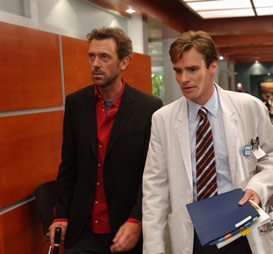Maluma, Takiti, Booba and All That

For decades I’ve been thinking occasionally about Maluma and Takiti, two irregular pencil drawings I once saw in an undergraduate psychology textbook. One was a bulbous outline while the other was jagged, like a shard of broken glass. The book asked us readers to guess which was Maluma and which was Takiti. If you identified Maluma as the roundish figure, you joined an overwhelming consensus. About 98 percent of the population choose the same way.
But why? That question has haunted me ever since. I think about it at least once a month (about as often as I reflect on what it is that chevres cheese has in common with the husky voice of female blues singers). Now I’ve found a guy who can explain the consonance between such dissimilar perceptions – sort of. The figures that he describes have new names – Booba and Kiki -- but you know without being told that Booba and Maluma are both roundish whereas Takiti and Kiki are both jagged.
The theorist who plays with this problem is not the Rev.Jesse Jackson, whom he seems to resemble in this photo, but Dr. Vilayanur S. Ramachandran, the director of the Center for the Brain and Cognition at the University of California, San Diego. He’s a brain man, in every sense of the word – one of the world’s leading researchers on neuroscience. I’ve been engrossed this evening reading his dazzling Reith Lectures, the most amazing of which analyze art by describing its impact on particular structures of the human brain. He’s quite a guy! And it turns out that this problem about Kiki and Booba is immensely important. I can’t do justice to his account, but I’ll be happy just to turn you onto his thinking.
His reasoning begins with a rare phenomenon: synesthesia. About one person in 200 sees numerals in color, even if they are printed in black or white. A smaller number also see Monday as red, Tuesday as indigo, Wednesday as blue and so on. Some people also see months as distinctively colored – December as yellow, for instance. This synasthesia phenomenon seems to run in families and Ramachandran attributes it to a mutant gene. He points out that numbers, days of the week, and months of the year have one thing in common: ordinality. And it just so happens that the part of the brain that processes color is right next to the part that is in the angular gyrus, the brain structure that handles ordinality. What’s happening here is like “crossed-wires” from adjacent parts of the brain. In fact, the kind of synesthesia symptoms that one experiences will depend on where the crossed wiring occurs. He calls some of the synesthetes “higher” and others “lower,” depending on where their respective “wires” are linked. This inference is pretty speculative, apparently, but I buy it.
But Ramachandran is only getting warmed up. He goes far beyond this, pointing out synesthesia is particularly common among artists, poets, and novelists – the “flaky” types who have this one thing in common: They are good at using metaphor – linking seemingly unrelated concepts. Suppose your mutant gene is expressed, not only in a local region of the brain, giving you purple and red numbers, but widely throughout the brain. You’ll have lots of things connecting that don’t go together. As he says, “If it’s expressed everywhere you get hyperconnectivity throughout the brain, making you more prone to metaphor, [linking] seemingly unrelated things…”
At this point in the lecture, Ramachandran claims that almost everyone in the audience is a synthete. To prove his point, he gives them the mental experiment that I had found in my undergraduate psych textbook – the bulbous amoeboid shape named Booba and the jagged shard named Kiki, aka respectively Maluma and Takiti. The jagged visual shape has a sharp inflexion and the sound ‘Kiki’ in the hearing centres of the brain also has a sharp sudden inflexion of sound. Ramachandran says that “the brain performs a cross-modal synesthetic abstraction, saying the only thing they have in common is the property of jaggedness. Let me extract that property. That’s why they’re both ‘Kiki.’”
Ramachandran offers proof of his theory. Take some patients who have a small lesion in the angular gyrus of their left hemisphere and show them the two pictures. They are statistically random in choosing the names Kiki or Booba. What this means is that in this case, synesthesia is normal and the absence of it is a sign of brain damage.
Not bad. I wonder how far one can go with that, though. What is it that chevres cheese has in common with sultry, husky female voices? To be sure, my brain is performing some kind of abstraction in associating them, but I cannot discern anything as clear as the shared “jaggedness” of Kiki, the sound and the shape, or the roundness of Booba. Many of our mental associations are probably specific and unique or shared by others within our culture, but what Ramachandran is interested in explaining are the universal patterns that result from the nature of the human brain. Apparently Kiki and Booba are universal perceptions. (Is that also true of my association between a kind of cheese and a kind of female voice?)
Anyway, I’m impressed by Ramachandran’s analysis of art in terms of the aptness of connections that are made between unrelated phenomena. He sees this as an aspect of the everyday work of the mind – to construct models or simulations and then test their adequacy for depicting ongoing experience and keeping us oriented.












